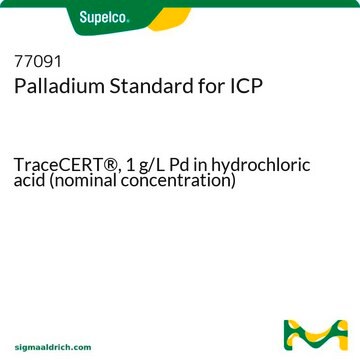28-5480
Succinic acid
SAJ special grade, ≥99.5%
Synonym(s):
Butanedioic acid
Sign Into View Organizational & Contract Pricing
All Photos(1)
About This Item
Linear Formula:
HOOCCH2CH2COOH
CAS Number:
Molecular Weight:
118.09
Beilstein:
1754069
EC Number:
MDL number:
UNSPSC Code:
12352106
PubChem Substance ID:
Recommended Products
grade
SAJ special grade
Assay
≥99.5%
form
crystalline
availability
available only in Japan
bp
235 °C (lit.)
mp
184-186 °C (lit.)
solubility
water: 83 g/L at 25 °C
density
1.564 g/cm3 at 15 °C
SMILES string
OC(=O)CCC(O)=O
InChI
1S/C4H6O4/c5-3(6)1-2-4(7)8/h1-2H2,(H,5,6)(H,7,8)
InChI key
KDYFGRWQOYBRFD-UHFFFAOYSA-N
Looking for similar products? Visit Product Comparison Guide
Signal Word
Danger
Hazard Statements
Precautionary Statements
Hazard Classifications
Eye Dam. 1
Storage Class Code
11 - Combustible Solids
WGK
WGK 1
Flash Point(F)
Not applicable
Flash Point(C)
Not applicable
Personal Protective Equipment
dust mask type N95 (US), Eyeshields, Gloves
Choose from one of the most recent versions:
Already Own This Product?
Find documentation for the products that you have recently purchased in the Document Library.
José Manuel Otero et al.
PloS one, 8(1), e54144-e54144 (2013-01-26)
Saccharomyces cerevisiae is the most well characterized eukaryote, the preferred microbial cell factory for the largest industrial biotechnology product (bioethanol), and a robust commerically compatible scaffold to be exploitted for diverse chemical production. Succinic acid is a highly sought after
James H Marden et al.
Evolution; international journal of organic evolution, 67(4), 1105-1115 (2013-04-05)
Oxygen conductance to the tissues determines aerobic metabolic performance in most eukaryotes but has cost/benefit tradeoffs. Here we examine in lowland populations of a butterfly a genetic polymorphism affecting oxygen conductance via the hypoxia-inducible factor (HIF) pathway, which senses intracellular
Hilal Taymaz-Nikerel et al.
Metabolic engineering, 16, 115-129 (2013-02-02)
The interactions between the intracellular metabolome, fluxome and growth rate of Escherichia coli after sudden glycolytic/gluconeogenic substrate shifts are studied based on pulses of different substrates to an aerobic glucose-limited steady-state (dilution rate=0.1h(-1)). After each added glycolytic (glucose) and gluconeogenic
Hanno C Erythropel et al.
Chemosphere, 91(3), 358-365 (2013-01-24)
Phthalate diesters such as di (2-ethylhexyl) phthalate (DEHP) are considered ubiquitous contaminants and are poorly biodegraded in the environment. Moreover, both the parent compound and stable metabolites such as mono (2-ethylhexyl) phthalate (MEHP) are linked to several negative impacts on
G M Tannahill et al.
Nature, 496(7444), 238-242 (2013-03-29)
Macrophages activated by the Gram-negative bacterial product lipopolysaccharide switch their core metabolism from oxidative phosphorylation to glycolysis. Here we show that inhibition of glycolysis with 2-deoxyglucose suppresses lipopolysaccharide-induced interleukin-1β but not tumour-necrosis factor-α in mouse macrophages. A comprehensive metabolic map
Our team of scientists has experience in all areas of research including Life Science, Material Science, Chemical Synthesis, Chromatography, Analytical and many others.
Contact Technical Service
![Tetra-n-butylammonium hydroxide solution in 2-propanol/methanol for titrations in nonaqueous media c[(C4H9)4NOH] = 0.1 mol/l (0.1 N), Titripur®, reag. USP](/deepweb/assets/sigmaaldrich/product/images/217/795/18cba546-7592-4bb4-8b67-0b4b229e0a2f/640/18cba546-7592-4bb4-8b67-0b4b229e0a2f.jpg)







